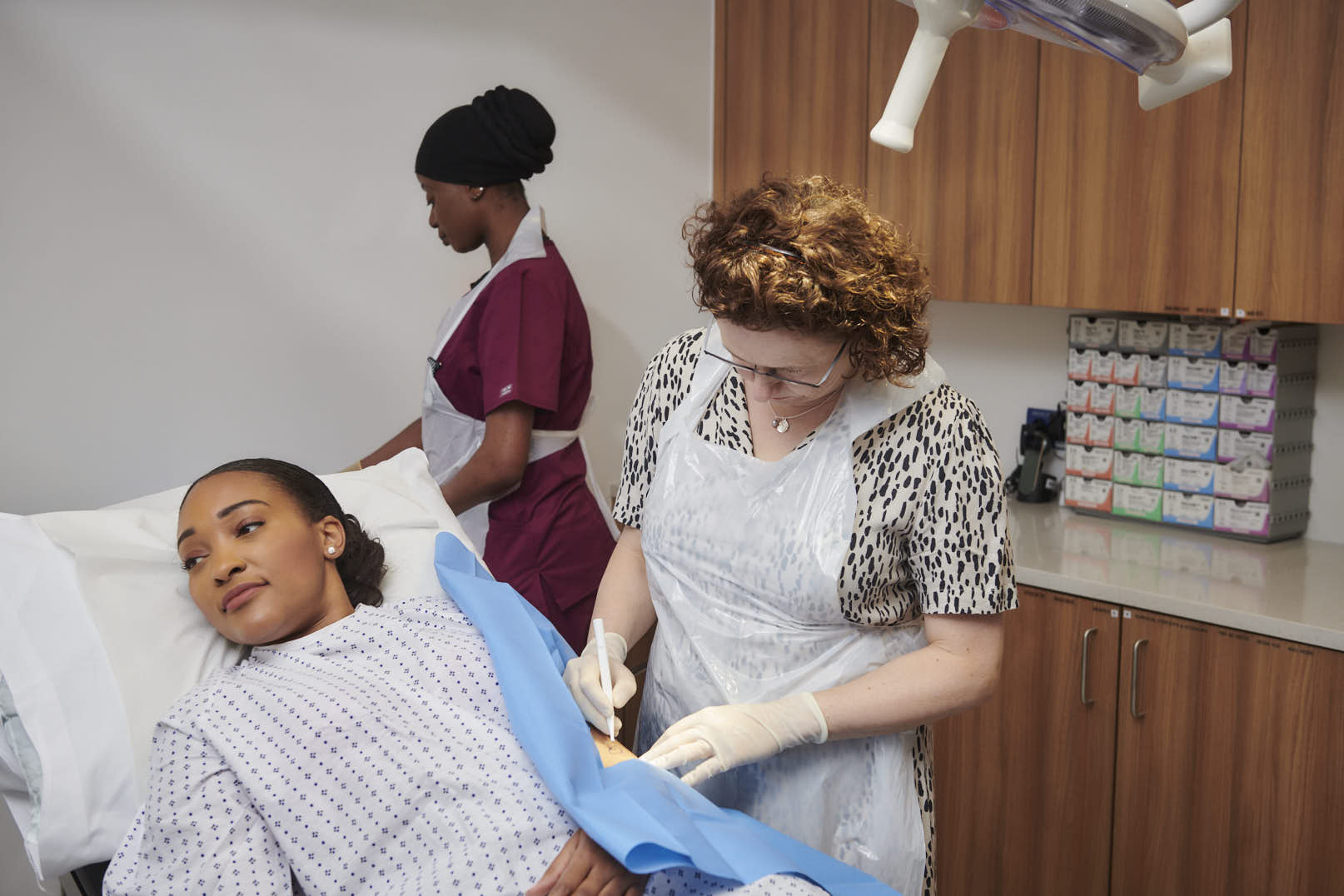
Dr Derrick Phillips
Specialist expertise: Acne, Rosacea, Eczema, Psoriasis, Melasma, Dermatology, Cosmetic Dermatology, Hyperhidrosis, Skin Tag Removal, Skin Cancer, Skin Surgery, Paediatrics.
Basal cell carcinoma or a rodent ulcer, is a form of non-melanoma skin cancer. It is the most common type of skin cancer and usually develops in areas that have had a lot of sun exposure. In this article, Dr Derrick Phillips explains basal cell carcinoma and how it appears in darker skin tones.

Basal cell carcinomas (BCCs) are harder to spot in darker skin tones. This is because they are less common in skin of colour, and when they do occur, they can look different compared to how they appear on lighter skin.
Regardless of your skin tone, it is important to monitor your skin for any new or changing marks and arrange an appointment with a consultant dermatologist if you have any concerns.
Basal cell carcinoma or a rodent ulcer, is a form of non-melanoma skin cancer. It is the most common type of skin cancer and usually develops in areas that have had a lot of sun exposure. BCCs grow slowly and rarely spread to other parts of the body.
Basal cell carcinomas are more common in people with fair skin and light hair, particularly those who have had a lot of sun exposure over their lifetime. These individuals are more likely to experience redness or sunburn with UV exposure and develop DNA mutations that can lead to the development of basal cell carcinomas over time.
Risk factors for basal cell carcinomas include:
Basal cell carcinomas can present in several ways. They often appear as pearly or translucent bumps, particularly on sun exposed areas like the face. They may also look like a flat scaly patch, a persistent sore or an area of skin resembling a scar.
If you are concerned about a mark on your skin, arrange to see your doctor or a consultant dermatologist for further assessment.
Basal cell carcinomas are less common in darker skin tones and are often missed because they can look different from their appearance in lighter skin. They may appear as a dark pearly bump, a shiny patch or a non-healing sore or scab. They are often pigmented appearing brown or black and can be mistaken for moles.
Basal cell skin cancer grows slowly and rarely spreads to other parts of the body, but it can still cause problems if left untreated. Over time, it can grow deeper into the skin and damage nearby tissue, including nerves, muscle or even bone in severe cases. This can lead to a requirement for more complex treatments, with risks of scarring, deformity and local recurrence. Early diagnosis and treatment can prevent these complications from occurring.
Basal cell skin cancer is highly treatable, especially when found early. The most important step is to see a consultant dermatologist if you are concerned about a mark on your skin. During a consultation at Welbeck, your dermatologist will ask questions about the mark and assess the area of concern with a special instrument called a dermatoscope. If basal cell skin cancer is suspected, they will arrange a biopsy to confirm the diagnosis.
Surgery is the most common treatment for basal cell carcinoma, with the aim being to remove the cancer completely. In 95% of cases, surgical removal will cure basal cell carcinoma.
Surgical options include:
Other treatment options available at Welbeck include:
Are basal cell carcinomas harder to spot in darker skin tones?
What is basal cell carcinoma?
Who is at risk of basal cell cancer?
Risk factors for basal cell carcinoma
What does basal cell carcinoma look like?
How does basal cell carcinoma appear in darker skin tones?
Basal cell skin cancer complications
How to treat basal cell skin cancer
Dr Derrick Phillips consults on general skin conditions including acne, rosacea, eczema, psoriasis and melasma. With hundreds of surgical hours, Dr Phillips offers a range of treatments for skin tags, skin lesions and skin cancers. He has an interest in cosmetic dermatology and offers facial rejuvenation treatments.